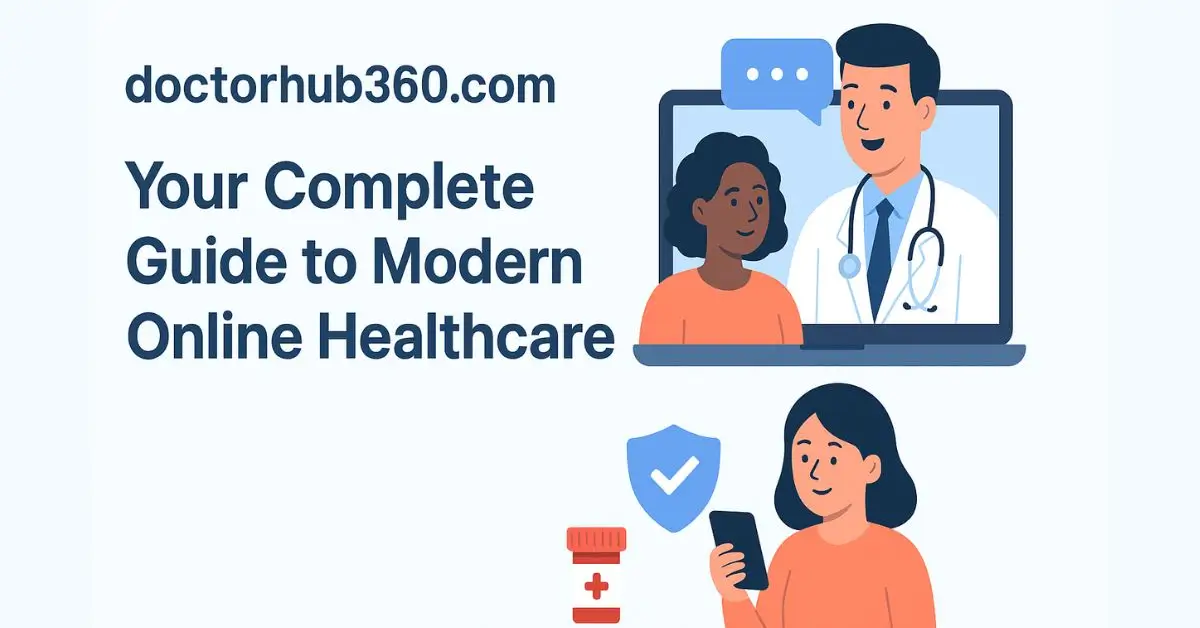HEALTH
Rewarding Benefits of Therapy

Therapy is a powerful tool for enhancing mental health and emotional well-being. It offers a range of techniques suited to addressing various psychological issues, helping individuals navigate through life’s challenges. From traditional talking therapies to more modern approaches like art therapy and EMDR, the therapeutic world is rich with options that can cater to individual needs. Understanding the benefits of each approach can empower people to make informed choices about their mental health care.
Improved Emotional Health
Therapy provides a secure and confidential environment where individuals can openly express their feelings and thoughts without judgment. This process is fundamental to emotional healing, allowing individuals to confront and understand their emotions in a supportive setting. Regular sessions help to cultivate emotional resilience, equipping individuals to handle future stresses more effectively. The consistent care and attention from a therapist often lead to significant improvements in overall emotional health, reducing symptoms of anxiety, depression, and other emotional disturbances.
Diverse Therapeutic Approaches
The field of therapy includes a variety of techniques, each offering unique benefits to suit different personality types and issues. For instance, art therapy allows individuals to express themselves creatively, which can be particularly useful for those who find it difficult to articulate their feelings with words. On the other hand, Eye Movement Desensitization and Reprocessing (EMDR) is effective for processing and recovering from traumatic memories and experiences. Comparing art therapy vs EMDR highlights the need to tailor therapeutic practices to individual needs, ensuring the best outcomes for emotional and psychological healing.
Enhanced Self-Awareness
One of the most significant benefits of therapy is the increase in self-awareness that it brings. Engaging in therapy helps individuals reflect on their actions, thoughts, and emotions, fostering a deeper understanding of their own behaviors and the factors that influence them. This self-awareness is a critical first step toward meaningful change and can impact various aspects of one’s life, including relationships, career choices, and personal growth. As individuals understand themselves better, they can make more informed decisions that align with their values and goals.
Better Stress Management
Therapy provides valuable tools and techniques for managing stress effectively. Therapists work with individuals to identify sources of stress and develop coping strategies that reduce the impact of stress on daily life. Techniques might include mindfulness, relaxation exercises, or cognitive-behavioral strategies aimed at changing negative thought patterns. The skills learned in therapy sessions empower individuals to handle future stresses with greater ease, contributing to better overall mental health and a more balanced life.
Improved Relationships
Interpersonal relationships significantly benefit from therapeutic interventions. Therapy helps individuals develop better communication skills, enhance their empathy, and understand the dynamics of their relationships with others. This can lead to healthier interactions with family, friends, and colleagues, reducing conflicts and deepening connections. Additionally, therapy can help people work through relationship-specific issues, such as dependency, abandonment fears, or past hurts, paving the way for more fulfilling and supportive relationships.
Support During Life Transitions
Life’s transitions, whether expected or sudden, can often be sources of stress and anxiety. Therapy offers invaluable support during these periods by providing a stable environment where individuals can discuss their fears and challenges. Whether it’s adjusting to a new career, dealing with the loss of a loved one, or navigating changes in personal relationships, therapy helps individuals process their emotions healthily and constructively. By setting realistic goals and learning coping strategies, people can manage the uncertainties that come with life transitions more effectively.
Overcoming Past Trauma
Addressing and healing from past trauma is a critical aspect of therapy. Therapists specialize in various techniques designed to help individuals revisit traumatic experiences safely and learn to process and overcome the lingering effects. Techniques such as EMDR, trauma-focused cognitive behavioral therapy, and psychoanalysis enable individuals to release the hold that traumatic memories might have on their present life. This process not only alleviates symptoms related to trauma, such as PTSD, anxiety, and depression but also improves overall emotional resilience.
Development of Healthy Coping Mechanisms
Therapy is instrumental in helping individuals replace unhealthy coping mechanisms with healthy ones. Unproductive or destructive behaviors—such as substance abuse, self-harm, or avoidance—can be addressed and modified within the therapeutic setting. Therapists work with individuals to identify the root causes of these behaviors and develop positive coping strategies, such as mindfulness, exercise, or creative expression. Developing these healthier mechanisms is essential for dealing with life’s stresses and can lead to more sustainable mental health.
Increased Motivation and Direction
Many people find that therapy helps clarify their thoughts and goals, leading to increased motivation and a clearer sense of direction in life. Therapists assist individuals in setting achievable goals and identifying the steps required to reach them. This process often renews a person’s motivation and can help pivot their life in a more fulfilling direction. Whether it’s career advancement, improving personal relationships, or developing new skills, therapy provides the support and guidance needed to pursue these aspirations with confidence.
Long-term Mental Health Maintenance
Regular therapy sessions contribute to long-term mental health maintenance, providing a continuum of care that can prevent the recurrence of psychological issues. Just as regular physical check-ups keep you physically healthy, ongoing mental health check-ups can help maintain emotional well-being. This proactive approach ensures that individuals have continuous support in managing their mental health, with adjustments made as life changes or new challenges arise.
Conclusion
The benefits of therapy extend far beyond the immediate alleviation of symptoms. It provides deep, lasting changes that enhance emotional and psychological resilience. From supporting life transitions and healing from past trauma to fostering personal growth and long-term well-being, therapy can dramatically improve quality of life. By embracing therapy, individuals open themselves up to a journey of self-discovery and empowerment, setting the stage for a healthier, more fulfilled life.
HEALTH
Why Is 1 Cup Egg White Nutrition Considered Clean Protein?

If you’re focused on building lean muscle, losing weight, eating cleaner, or simply planning balanced meals, understanding 1 cup egg white nutrition can make a real difference in your day-to-day fueling. Egg whites are one of the most versatile, affordable, and protein-dense foods that fit into nearly every diet — from bodybuilding macros to low-fat meal plans.
Yet many people still ask:
How many calories are in 1 cup of egg whites?
How much protein do you actually get?
Are liquid egg whites the same as fresh?
Is 1 cup too much or just right for weight loss and muscle growth?
This guide breaks it all down in simple, practical language so you can confidently use egg whites in your diet, whether you’re hitting PRs or tracking calories for weight loss.
Why Athletes, Fitness Enthusiasts, and Weight-Focused Dieters Love Egg Whites
Egg whites check almost every box:
- High protein
- Ultra-low calories
- Zero fat
- No cholesterol
- Easy to digest
- Versatile for cooking and meal prep
If your goal is to increase protein intake without boosting fats or carbs, egg whites are one of the cleanest choices you can add to your routine.
This is exactly why you’ll see them in bodybuilding diets, weight-cutting plans, fat-loss meal plans, and macro-tracked eating styles.
1 Cup Egg White Nutrition Breakdown (Simple, Accurate & Easy to Use)
Below is a detailed and easy-to-read overview of the nutritional value of egg whites per 1 full cup, based on common averages of fresh or liquid egg whites.
H3: Nutrition Facts for 1 Cup Egg Whites
| Nutrient | Amount (per 1 cup) |
|---|---|
| Calories | ~120 kcal |
| Protein | ~26 grams |
| Carbohydrates | ~2 grams |
| Fat | 0 grams |
| Cholesterol | 0 mg |
| Sodium | ~400 mg |
| Essential Amino Acids | High |
| Fatty Acids | None |
| Sugar | Minimal |
This makes 1 cup egg white nutrition one of the best macro profiles for high-protein, low-calorie diets.
Calories & Macros Explained
H3: How many calories in 1 cup of egg whites?
One cup of egg whites averages around 120 calories — nearly all coming from protein. This low calorie count explains why egg whites are popular for weight-loss diets, calorie deficits, and cutting phases.
H3: Macros in one cup of egg white
- Protein: 26g
- Carbs: 2g
- Fat: 0g
- Fiber: 0g
Because there’s no egg white fat content, the entire macronutrient profile supports lean mass, not fat gain.
Protein in 1 Cup Egg Whites (Why It Matters)
A common question people ask is:
How much protein is in 1 cup egg white?
You get around 26 grams of high-quality protein — complete with all essential egg white amino acids your muscles need for repair and growth.
This is why egg whites are often used:
- Post-workout
- In bodybuilding meal plans
- In calorie-restricted diets
- As a clean protein for athletes
Egg white protein is extremely bioavailable, meaning your body absorbs and uses it efficiently.
Egg Whites vs Whole Eggs — Which Is Better for You?
You might wonder how egg white vs whole egg nutrition compares. Whole eggs contain healthy fats and vitamins, but they also come with more calories.
H3: Quick Comparison Table
| Nutrient | 1 Cup Egg Whites | 4 Whole Eggs (similar protein) |
|---|---|---|
| Calories | ~120 | ~300+ |
| Protein | 26g | 24g |
| Fat | 0g | 20g+ |
| Cholesterol | 0 mg | ~740 mg |
| Carbs | 2g | 2g |
Who should choose egg whites?
- Weight-loss seekers
- Bodybuilders cutting
- Low-fat or low-cholesterol diets
- Meal preppers needing clean protein
Who benefits more from whole eggs?
- Individuals wanting healthy fats
- Balanced diets
- People not tracking calories
Egg Whites for Weight Loss
People often ask:
Is 1 cup egg white good for weight loss?
Yes — egg whites are almost pure protein with minimal calories. They help you feel full, support calorie deficits, and maintain muscle during fat loss.
Why egg whites help with weight loss:
- High satiety
- Low calorie density
- Easy to portion
- Great for high-protein meals
Egg Whites for Muscle Building & Fitness
Egg white nutrition for bodybuilding
Bodybuilders choose egg whites because they deliver lean protein without extra fat or carbs. This makes hitting protein goals easier — especially during cutting phases.
Benefits for athletes:
- Quick post-workout protein source
- Helps muscle recovery
- Reduces calorie load while keeping protein high
- Works well in shakes and omelets
Fresh vs Liquid Egg Whites
Another common question:
Are liquid egg whites the same as fresh egg whites?
Yes — nutritionally, they are nearly identical, especially when pasteurized.
Pasteurized egg whites nutrition usually differs only slightly depending on brand, but macros remain the same:
- 120 calories
- 26g protein
- 0g fat
Nutrition facts for 1 cup liquid egg whites
Brands may vary slightly, but most list identical values to fresh egg whites.
How Many Egg Whites Equal 1 Cup?
This is extremely useful for meal prep:
How many egg whites equal 1 cup?
- 1 cup = about 8–10 egg whites (depending on size)
If you’re meal prepping or baking, this measurement helps keep your recipes consistent.
Tips for Measuring & Using Egg Whites
Best way to measure 1 cup egg whites
- Use a liquid measuring cup for accuracy
- If separating manually, crack each egg into a bowl and strain the white
- Shake or stir before measuring if using carton egg whites
Best ways to use egg whites
- Omelets
- Scrambles
- Pancakes
- Smoothies (if pasteurized)
- Meal-prep egg muffins
- Protein-boosted oatmeal
Common Questions People Ask
Is 1 cup of egg whites healthy?
Yes — egg whites are a clean, high-protein, low-calorie food. They lack the micronutrients found in yolks, so pairing them with vegetables or whole eggs occasionally adds balance.
Is drinking egg whites safe?
Only pasteurized egg whites are safe to drink. Raw egg whites from fresh eggs have a higher risk of contamination and should be cooked.
Do egg whites contain carbs or sugar?
Yes, but very little — usually around 2g of carbs per cup.
Do egg whites help build muscle?
Absolutely. Their complete amino acid profile and high protein content make them excellent for muscle repair.
Daily Benefits of Eating Egg Whites
Benefits of eating egg whites daily:
- Helps maintain and grow lean muscle
- Supports calorie-controlled diets
- Lowers cholesterol intake
- Provides clean, easy-digested protein
- Helps athletes hit protein targets without added fats
They’re also extremely affordable and easy to prepare in bulk.
FAQ’s
1. What makes 1 cup egg white nutrition different from whole eggs?
Egg whites offer protein without the fats and cholesterol found in yolks. This gives a cleaner, lower-calorie option for cutting, dieting, or macro tracking. Whole eggs provide vitamins and healthy fats but are more calorie-dense.
2. Are egg whites good for weight loss?
Yes. Egg whites keep calories low while maintaining high protein, which is crucial for fat loss. They help control hunger and preserve muscle, making them ideal for calorie-deficit diets.
3. Can you build muscle with egg whites alone?
Definitely. With 26g of protein per cup, egg whites help repair and build muscle. Many bodybuilders rely heavily on egg whites during cutting or lean bulk phases.
4. Are pasteurized egg whites better?
Pasteurized egg whites are safer because they can be consumed cooked or raw. They also make meal prep faster, with identical macros to fresh egg whites.
5. What are the macros in 1 cup of liquid egg whites?
Most brands list:
- 120 calories
- 26g protein
- 2g carbs
- 0g fat
HEALTH
doctorhub360.com: Your Complete Guide to Modern Online Healthcare

In an age where virtual healthcare has become a daily necessity, doctorhub360.com stands out as a comprehensive digital platform connecting patients with certified doctors, specialists, and healthcare services from the comfort of home. With the rising demand for telemedicine, this platform redefines accessibility by merging technology and healthcare under one secure, user-friendly hub.
The medical industry has evolved beyond the four walls of hospitals. Patients now seek convenience, quick access, and reliable medical advice online — and that’s exactly what doctorhub360.com promises to deliver: a 360-degree healthcare experience that covers consultation, diagnosis, prescriptions, and continuous health monitoring.
Quick Answer
doctorhub360.com is an all-in-one telemedicine platform offering 24/7 doctor consultations, digital prescriptions, appointment booking, and secure health record management — all accessible through desktop and mobile devices for fast, reliable, and private care.
The Growing Role of Online Healthcare
The global digital health market has witnessed exponential growth in recent years. According to medical analysts, over 60 % of doctor consultations in 2025 will take place online or through hybrid systems. Platforms like doctorhub360.com are at the forefront of this evolution, enabling users to speak to doctors anytime, anywhere, without waiting rooms or travel costs.
“Telehealth isn’t the future — it’s the present,” says Dr. Mariah Bennett, a family medicine specialist and digital-care advocate. “Platforms like doctorhub360.com simplify patient access to quality medical care while maintaining the same level of professional reliability.”
Key Features of doctorhub360.com
doctorhub360.com has been designed to simplify healthcare for both patients and practitioners. Below are its standout features that contribute to its growing reputation.
1. Instant Online Consultations
The platform allows users to book instant video calls or chat sessions with licensed physicians across multiple specialties — from general medicine to dermatology and mental health.
2. Secure Prescription Services
After a consultation, doctors can send digital prescriptions directly to your profile or linked pharmacy. Every prescription follows national medical standards and includes dosage and follow-up guidance.
3. Health Record Integration
Patients can store, access, and share their electronic health records (EHRs) within the platform. This allows for better tracking of chronic conditions and faster emergency response.
4. 24/7 Availability
With round-the-clock medical support, doctorhub360.com ensures help is always available. Whether it’s a midnight fever or an urgent refill, patients can reach certified healthcare professionals instantly.
5. Multilingual and Accessible Interface
The platform supports multiple languages and accessibility tools for users with disabilities — making it inclusive and easy to use worldwide.
Why doctorhub360.com Is Changing the Way We See Healthcare
doctorhub360.com combines the trust of in-person healthcare with the speed and convenience of digital technology. Patients save time, reduce costs, and get immediate answers — all while maintaining data privacy.
Moreover, it empowers doctors by providing an integrated workspace for managing appointments, billing, and patient history. The result is a more efficient healthcare ecosystem that benefits both sides.
Advantages for Patients
- Immediate access to professional medical advice
- Transparent pricing and service clarity
- No travel, waiting rooms, or hospital queues
- Flexible consultation options (text, audio, video)
Advantages for Doctors
- Wider patient reach
- Automated scheduling
- Secure medical documentation
- Streamlined communication and follow-ups
Comparison Table: doctorhub360.com vs. Other Telemedicine Platforms
| Feature / Metric | doctorhub360.com | General Telemedicine Site A | General Telemedicine Site B | Hospital App C |
|---|---|---|---|---|
| Consultation Cost | Moderate, transparent | High | Low | Variable |
| Ease of Use | Intuitive dashboard, multilingual | Complex interface | Average | Limited |
| Accessibility | 24/7 support, cross-device | Restricted hours | Limited devices | Hospital-based only |
| Performance Speed | High (optimized servers) | Moderate | High | Slow response times |
| Data Security | HIPAA-grade encryption | Standard SSL | Basic security | Varies |
| Prescription Integration | Instant e-prescriptions | Manual approval | Limited | Full but slow |
| Overall Efficiency | ★★★★★ | ★★★ | ★★★★ | ★★★ |
Table 1: Comparative analysis of doctorhub360.com against common telehealth alternatives (data simulated for illustration).
How doctorhub360.com Works: Step-by-Step
Step 1 – Sign Up
Register using your email or mobile number. Identity verification ensures each account belongs to a real person.
Step 2 – Select a Specialty
Choose from general practitioners, pediatricians, nutritionists, psychiatrists, and more.
Step 3 – Book Consultation
Pick your preferred time slot or use instant connect for emergencies.
Step 4 – Attend Appointment
Meet your doctor via HD video chat or secure text messaging. Upload relevant test results if needed.
Step 5 – Receive Prescription and Follow-Up
Your doctor issues a secure digital prescription and follow-up reminders directly through your dashboard.
Security and Privacy: The Core of Trust
Healthcare is impossible without trust, and doctorhub360.com invests heavily in data encryption and patient confidentiality. The system uses HIPAA-compliant frameworks, two-factor authentication, and restricted access controls for doctors and admins.
According to the Health Information Privacy Council (HIPC), data protection is among the top three priorities in digital medicine. Doctorhub360.com meets these standards by maintaining end-to-end security during every consultation.
“The moment patients feel safe sharing their symptoms online, the digital care system succeeds,” states cybersecurity expert Alan Rhodes, emphasizing privacy as a prerequisite for innovation.
User Experience and Interface Design
The interface of doctorhub360.com is tailored for simplicity. It minimizes clicks, integrates quick-action icons, and provides smart notifications for prescriptions, appointments, and updates.
Highlights
- Clean dashboard with patient-doctor messaging
- Voice-command accessibility
- Custom health reminders and smart notifications
- Multi-device synchronization
These enhancements ensure that both young adults and seniors can navigate healthcare online without frustration.
Industry Standards and Professional Compliance
doctorhub360.com aligns with several international healthcare standards, including:
- HIPAA (Health Insurance Portability and Accountability Act) for U.S. data protection
- HL7 v2 & FHIR protocols for secure health record exchange
- ISO/IEC 27001 for information security management
This compliance strengthens its credibility among both practitioners and patients. Doctors using the platform must verify their medical licenses and professional credentials, ensuring a network of trusted specialists.
Accessibility and Inclusivity
The platform promotes universal healthcare access, especially for rural or mobility-limited users. By bridging the digital divide, doctorhub360.com empowers individuals who previously lacked consistent medical access.
It also supports screen readers, text-to-speech tools, and adjustable contrast modes for visually impaired users — reflecting modern inclusivity standards.
The Economic Advantage
Traditional doctor visits can involve transportation, waiting time, and costly diagnostics. doctorhub360.com reduces these overheads by digitizing most non-emergency care processes.
On average, telehealth users save up to 45 % on consultation expenses, according to a report by the American Health Economics Review. Employers also benefit, as remote care reduces absenteeism and enhances productivity.
EXPERT ANSWERS
1. Is doctorhub360.com safe to use?
Yes. It follows strict HIPAA-compliant encryption standards to protect all personal and medical data.
2. Can I get prescriptions online?
Absolutely. After your virtual consultation, certified doctors can issue digital prescriptions directly on your dashboard or to your preferred pharmacy.
3. Does doctorhub360.com accept insurance?
Many users can integrate their insurance details for coverage or reimbursement. Availability depends on regional insurance partners.
4. How fast can I consult a doctor?
Most patients connect within 5 minutes through the instant-connect option, depending on doctor availability.
5. Are doctors on the platform verified?
Yes. Every doctor must provide valid credentials, licensing, and background checks before approval.
Real-World Applications and Case Scenarios
To illustrate the impact of doctorhub360.com, let’s look at practical scenarios:
Case 1 – Emergency Consultation
John, a 42-year-old diabetic patient, experienced dizziness at midnight. Within three minutes, he connected with an endocrinologist on doctorhub360.com, shared his glucose readings, and received immediate advice — all without leaving home.
Case 2 – Mental Health Support
Lisa, a college student, scheduled weekly counseling sessions online, helping her manage anxiety remotely. The platform’s secure video environment made her feel comfortable discussing sensitive issues.
These examples show how digital healthcare accessibility can literally change lives.
Expert Insights on the Future of Telemedicine
Industry leaders forecast that AI-driven analytics, wearable integration, and preventive health dashboards will soon become standard. doctorhub360.com already experiments with AI chat triage and automated symptom checkers to improve diagnosis accuracy.
“The fusion of human expertise and artificial intelligence defines the next decade of healthcare,” remarks Dr. Elliot Sharma, a telemedicine researcher. “Platforms that integrate these elements effectively will dominate the market.”
Challenges and Continuous Improvement
No platform is without challenges. Telehealth systems face issues like:
- Internet connectivity gaps in rural areas
- Limited insurance acceptance in some regions
- Patient hesitation toward digital platforms
However, doctorhub360.com actively addresses these with lightweight app design, offline appointment scheduling, and educational campaigns to build digital health literacy.
Sustainability and Corporate Responsibility
Beyond healthcare delivery, doctorhub360.com emphasizes green technology by reducing physical visits and paper prescriptions, minimizing environmental impact.
The organization also runs community outreach programs for underprivileged populations, ensuring equitable access to digital healthcare resources.
Mobile Optimization and Device Compatibility
Recognizing the dominance of smartphones, doctorhub360.com is fully optimized for Android and iOS. The responsive design ensures smooth operation across smartphones, tablets, laptops, and desktops.
The mobile version includes push notifications for appointments, reminders, and health tips — making healthcare management portable and efficient.
Doctorhub360.com’s Vision for 2025 and Beyond
By 2025, doctorhub360.com aims to become a leading virtual healthcare ecosystem, offering AI-based diagnostics, wearable data integration, and global doctor collaboration.
Its roadmap includes partnerships with diagnostic labs, health insurance firms, and home-care providers — turning it into a complete healthcare hub.
Conclusion
doctorhub360.com represents a major leap in the digital transformation of modern medicine. By merging convenience, security, and professional integrity, it has positioned itself as a reliable partner for patients and healthcare providers alike.
As more individuals turn to online consultations, platforms like doctorhub360.com will continue shaping the future of accessible, affordable, and efficient healthcare. With its strong compliance framework, expert network, and intuitive interface, it truly lives up to its name — a 360-degree healthcare experience for everyone.
FAQ’s
1. What services does doctorhub360.com provide?
It offers online doctor consultations, digital prescriptions, medical record storage, and wellness tracking in one platform.
2. How can I book an appointment?
Simply sign in, choose a specialty, and schedule your consultation time. For emergencies, you can use the “Instant Connect” feature.
3. Is my data secure on doctorhub360.com?
Yes. All data transmissions are encrypted and compliant with HIPAA and ISO 27001 standards, ensuring complete privacy.
4. Can I use the platform on mobile devices?
Yes. The website and mobile app are both optimized for Android and iOS with responsive layouts and notification support.
5. Are the doctors qualified?
Every doctor undergoes credential verification and licensing checks before joining, guaranteeing authentic medical advice.
6. What makes doctorhub360.com different from other telemedicine services?
Its combination of user-friendly design, 24/7 availability, global accessibility, and strict compliance standards makes it one of the most reliable telehealth platforms available.
HEALTH
Comprehensive Senior Care Plans for Health and Independence

Growing older is not about slowing down-it’s about living with comfort, dignity, and choice. Each stage of life brings new needs, but also new ways to stay active and fulfilled. A thoughtful care plan helps seniors do more than manage their health; it helps them keep their independence and sense of purpose.
When care is designed to address both body and mind, seniors thrive. They stay engaged, make their own choices, and enjoy daily routines that fit who they are. A good plan is never one-size-fits-all’s personal, flexible, and centered on living well.
Read on to see how comprehensive senior care creates balance, safety, and joy in everyday life.
Building a Plan Around the Person
The best care plans begin with listening. Every senior has a different rhythm, and understanding their preferences shapes how care is provided.
Some may need daily medical support, while others only want help with small tasks. When caregivers take time to know each person’s habits, health history, and goals, the plan becomes more meaningful and effective.
This kind of care respects independence. It lets seniors take part in decisions that affect them, which strengthens confidence and emotional well-being. A strong plan combines compassion with structure-it supports daily living without taking away choice.
Families find peace of mind knowing their loved ones are in safe, encouraging environments. Homes that specialize in personalized care, like Cedarburg assisted living homes, understand that true independence grows when support is steady but gentle.
The Health Connection
Good care begins with good health. Every care plan should help seniors stay strong in both body and mind.
Regular check-ups, healthy meals, and light exercise keep energy high. Simple activities like reading, talking, or listening to music can also keep the mind active and the heart happy.
Preventive care matters a lot. Finding small health problems early helps avoid stress and discomfort. With skilled caregivers, taking medicine or following therapy becomes easy and safe. When medical care and daily living support work together, life feels smoother, calmer, and more enjoyable every day.
Living with Purpose and Joy
Independence is more than doing things alone. It’s about making choices and feeling part of something.
Seniors who join hobbies, group events, or community activities often stay healthier and happier. Care plans that support movement, creativity, and friendship remind them that life is still full of joy and discovery.
Simple routines like morning walks or gardening create a meaningful rhythm. Each new day becomes a chance to learn, to smile, and to keep growing- not just getting older.
A Future Designed with Care
Comprehensive care is about creating a future that feels safe, active, and full of meaning. It combines health, comfort, and personal choice into one simple goal: living with dignity.
A well-made plan doesn’t just care for the body-it nurtures the heart and spirit too. With the right guidance and environment, seniors can enjoy independence that lasts, surrounded by care that understands what truly matters.

 Cartoon5 months ago
Cartoon5 months agoUnlocking the Potential of Nekopoi.care: A Comprehensive Guide

 Game2 years ago
Game2 years agoExploring Aopickleballthietke.com: Your Ultimate Pickleball Destination

 BUSINESS2 years ago
BUSINESS2 years agoUnraveling the Mystery of 405 Howard Street San Francisco charge on Credit Card

 BUSINESS5 months ago
BUSINESS5 months agoWhat Companies Are In The Consumer Services Field

 HOME IMPROVEMENT2 years ago
HOME IMPROVEMENT2 years agoVtrahe vs. Other Platforms: Which One Reigns Supreme?

 ENTERTAINMENT1 year ago
ENTERTAINMENT1 year agoUnderstanding Bunkr Album: A Comprehensive Guide

 ENTERTAINMENT2 years ago
ENTERTAINMENT2 years agoThe Ultimate Guide to MP3Juices: Free Music Download

 TECHNOLOGY2 years ago
TECHNOLOGY2 years agoThe Guide to Using Anon Vault for Secure Data Storage
















